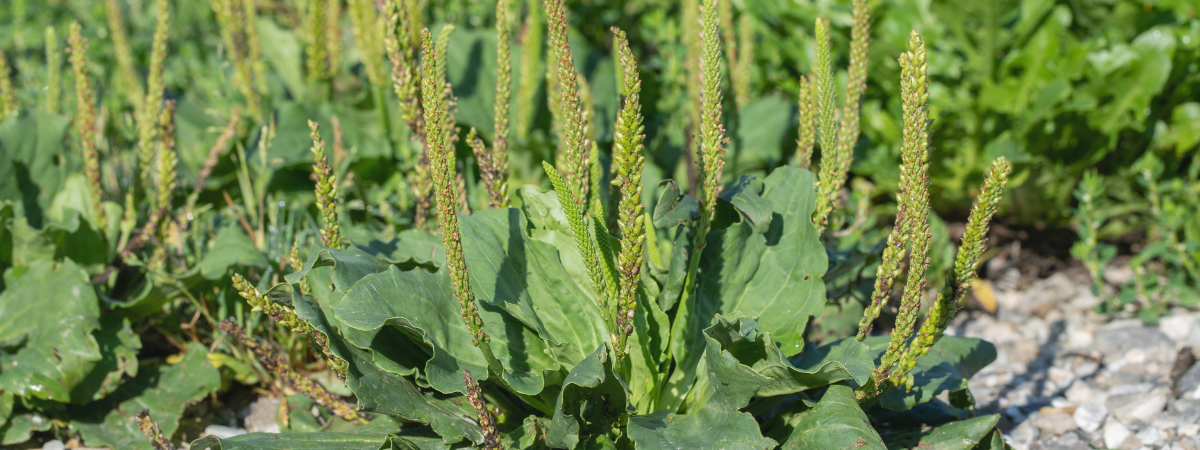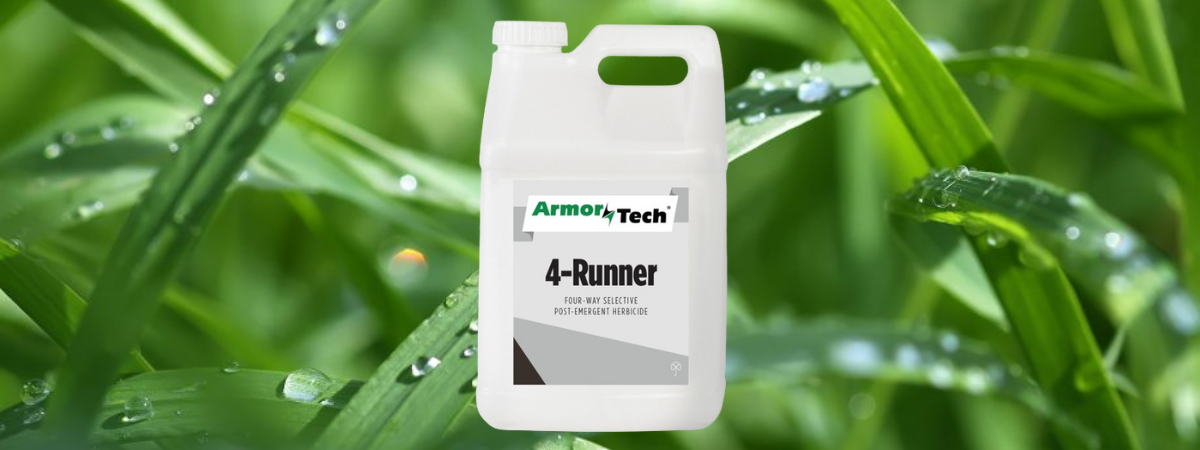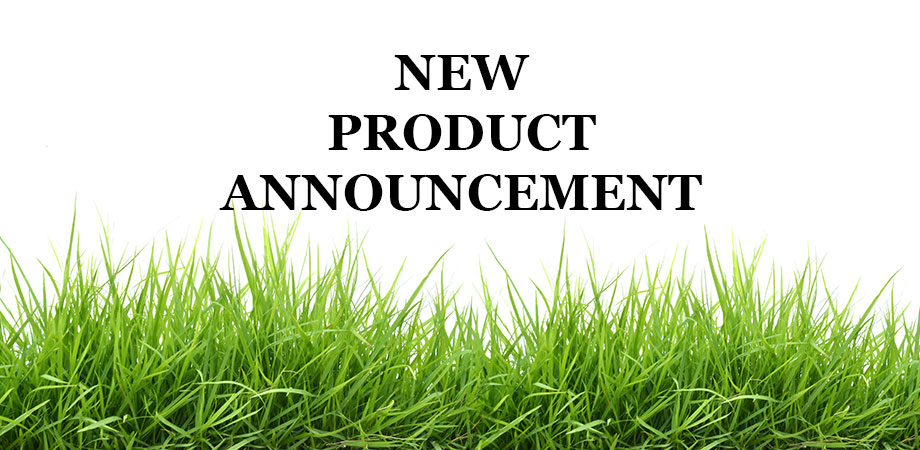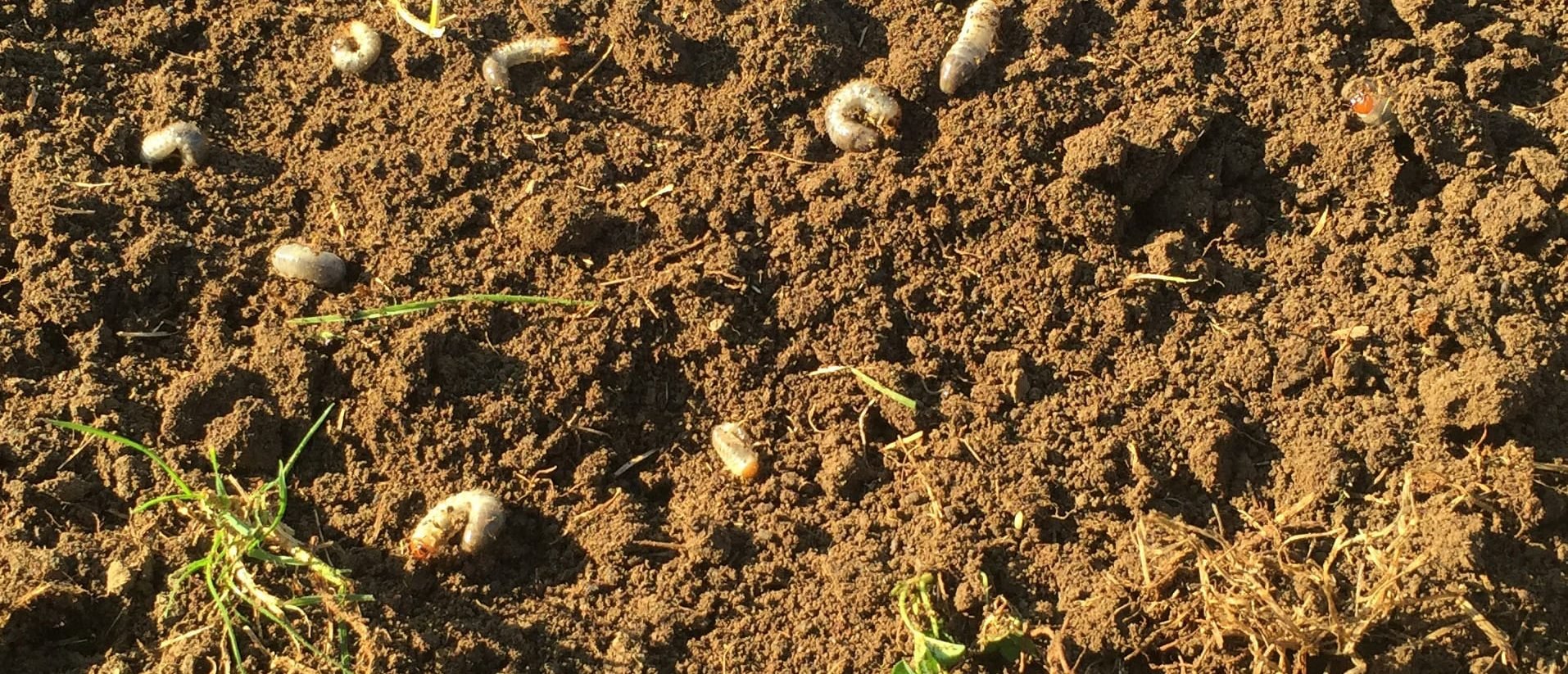When it comes to problematic perennial weeds, one of the biggest culprits is broadleaf plantain (Plantago major). It’s present all across the United States, is very adaptable, and is tough to kill—worse than dandelion—which makes it an important target for lawn care operators.
Identifying Broadleaf Plantain
Broadleaf plantain plants have large oval-shaped leaves that grow in a rosette pattern and large stalks that can grow up to around a foot tall. The stalks produce small white flowers and also contain the plant’s seeds. They also have short, thick leaf stems that often take on a reddish/purple hue. Below the surface, these weeds have fibrous roots, which help them thrive in compact soil. The plant is typically green but can appear purple when growing in cooler conditions. Identification is easy, as LCOs will probably spot the stalks and know immediately what they are dealing with.
Broadleaf Plantain’s Life Cycle
As a perennial broadleaf weed, broadleaf plantain comes back year after year. Each individual plant produces thousands of seeds, which are primarily spread by wind. These seeds will begin germinating during the late spring and flower in the early summer. They will then go dormant in the winter before coming back again the following year. Since broadleaf plantains can live for decades in the same areas and can withstand low mower heights, herbicides (which we will cover later) are the best and only viable control method.
Rugel’s Plantain
Like many plants, broadleaf plantain has a lookalike. While difficult to tell the two apart at first glance, you can tell if the plant is Rugel’s plantain by examining its leaves. If the petiole appears purple or red near the stem, it is Rugel’s plantain. Rugel’s plantain often has a longer stalk than broadleaf plantain, too, which can help solidify an identification.
Controlling Broadleaf Plantain
Maintaining a healthy stand of turf is the only way to culturally combat broadleaf plantain. Even proper mowing, watering, and aeration practices can’t wholly prevent broadleaf plantain from appearing, however. Herbicides—both pre- and post-emergent—are going to provide the most effective defense.
Pre-Emergent Control
Applying pre-emergent herbicides can help LCOs fight broadleaf plantain and other weeds before they germinate. Ensure that applications are made by mid-spring to ensure maximum control. Some effective active ingredients include indaziflam, mesotrione, and isoxaben. Advanced Turf Solutions carries several pre-emergents that control broadleaf plantain, including:
- Crew: A granular product that contains isoxaben (0.5%) and dithiopyr (0.25%)
- Gallery SC: A liquid product that contains isoxaben (45.45%)
- Snapshot 2.5 TG: A granular product that contains trifluralin (2%) and isoxaben (0.5%)
Post-Emergent Control
Getting rid of broadleaf plantain is easiest when the plants are growing. Post-emergent herbicides with multiple modes of action will be most effective. Look for products that include a combination of active ingredients like 2,4-D, dicamba, diquat, glyphosate, MCPA, quinclorac, sulfentrazone, and triclopyr. Advanced Turf carries post-emergents that control broadleaf plantain, including:
- Crossroad Herbicide: A liquid product containing 2,4-D (34.4%) and triclopyr (16.5%)
- Cool Power: A liquid product that contains MCPA (56.14%); triclopyr (5%); and dicamba (3.6%)
- ArmorTech 4-Runner: A liquid product that contains MCPA (20.10%), triclopyr (9.85%), dicamba (3.15%), and sulfentrazone (0.82%)
Remember to always follow label instructions when applying herbicides.
Additional Information
It’s important to note that broadleaf plantain has become more resistant to 2,4-D formulations. Mixing triclopyr with your standard two or three-way herbicide or using an herbicide that has triclopyr in the formulation can help prevent resistance. After dealing with broadleaf plantain, LCOs should always clean their equipment so seeds are not carried from property to property.
Talk with your Advanced Turf sales rep about broadleaf plantain control to determine what products and treatment schedule are best for your situation.












